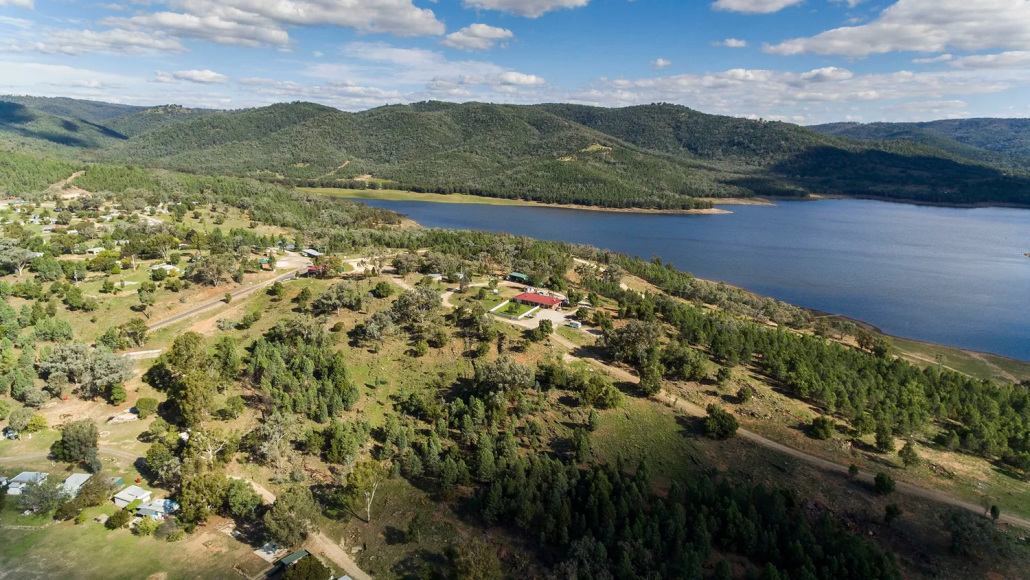Image: Cudgegong River, Mudgee, NSW (photo by Liberty2018).
‘Just as rivers flow’
Andrew Collis
River Sunday, Season of Creation A
Revelation 22:1-5; Matthew 28:1-10
The final chapter of the book/letter of Revelation depicts a heavenly city on Earth – the descent of a New Jerusalem – where the Lamb of God (nonviolence) rules, and God’s name (love/liberation …) is reflected in human faces. We are shown a street, a life-giving river and fruitful/medicinal trees. The vision is one of harmony, sustainability; illumination, salvation (wellness and wholeness).
This movement from above to below is significant. The vision counters conventional (otherworldly) notions of transcendence and calls us to lower our sights – to look around us for signs of truth, goodness and beauty – just as rivers flow from high to lowlands and to the sea.
Philosopher Martha Nussbaum writes of “transcending by descent, delving more deeply into oneself and one’s humanity, and becoming deeper and more spacious as a result”. And adds: “Being a part of a group that, as a group, does fine deeds can be sufficient; and frequently this is a more effective way of making the world than in the image of one’s own virtuous action.”
It’s not for nothing that baptism is our sacrament of renewal and community. Each of us is called underwater, into the flow of rivers – with Christ (with all the holy/wise ones – I can’t help seeing the platypus, an astonishing creature/survivor), into the flow of truth, goodness and beauty. At the font, symbol of the Jordan (promise of life), we offer a prayer of thanksgiving.
“We are thankful for water. / Without it we cannot live. / We lament that in building a certain life for ourselves / we have denied life to other creatures dependent on water … // We offer our prayer as people from the Cooks River catchment – / our local creek was once Shea’s Creek (now the Alexandra Canal), a tributary of the Cooks River./ Our drinking water comes mainly from the Coxs and Wollondilly rivers, / via Warragamba Dam and Prospect Water Filtration Plant. // Our food, clothes, all the goods we consume / embody water that comes from many different places … // In celebrating the promise of new life, / we are open to the Spirit of Creation – / with care and respect for water. / Amen.” (Thanks to Dr Miriam Pepper for this prayer.)
This is a precious prayer. It draws us to deeper knowledge and wisdom. Talk/prayer/thought about rivers leads to talk/prayer/thought about mountains, plains and seas … place names (colonial and Aboriginal), irrigation practices, the politics of water … rainfall, fragile ecosystems, energy … convergence, crossings …
The speaker of Bob Dylan’s country blues, “Watching the River Flow” (1971), is hoping to rediscover inspiration while sitting by the river. At the beginning of the song the person feels bereft of ideas and sad. But gradually, this attitude changes, and the person feels the flow of the river as a healing force.
The very repetition of the line “And watching the river flow” has a meditative effect – the sight and sound of it create a calm place-world. The river reminds the person of literature. The river brings life-possibilities and is the origin of religious and philosophical interpretations of existence.
All this listeners are able to work out for themselves (the song is simple), reminded that experiencing the river as the place of myth and wonder starts with the artist or philosopher experiencing that the river flows and will go on flowing (see Anne-Marie Mai, Bob Dylan the Poet, 2018).
When my friend David sent me a book of his photographs of the river in Rotterdam (the Nieuwe Maas, a distributary of the Rhine) – gently persistent, resisting human control; reflections in the water, upside-down scenes – I was moved to write a lyric about loving rivers “all the way back to their source” (Raymond Carver) – the voice could be a human or divine voice.
“My love for you, I trace it back / To the Café de Waterklerk // My love for you, I trace the call / Climb up to write it on the wall // Trace it back, my love for you / And if the moon prays, I pray too // Precisely trace the large stones laid / To build a bridge, to create shade // My love for you, I trace it out / In Prussian blue and apricot // My love for you is traced upon / Gold icons, old-time religion // My love for you, a trace within / The power of a waterhen // My love through tracing paper / See all things reshaped by nature // Trace around it, lace untie / Anchor cast toward the sky” (2023).
We peer into nature and see all things related, working together, coming and going, moving, changing, flowing … an effervescence and transcendence … mystery … truth, goodness, beauty …
I turn again to Tyson Yunkaporta’s Sand Talk. The author is wary of abstract western and modern thinking. The struggle for moral high ground also gets in the way of good thinking, he says, inviting us to look around, to go deeper.
What we can know is determined by our obligations and relationships to people, Ancestors, land and waters, Law and creation. What we know is that the role of custodial species is to sustain creation, which is formed from complexity and connectedness. The way we know this is through our cultural metaphors. The way we work with this knowledge is by positioning, sharing and adapting our cultural metaphors.
Respect, connect, reflect, direct – in that order, advises Yunkaporta.
“Respect” (the work of our spirits) means reading Revelation as a call to sustainable life – in cities, suburbs and small towns.
“Connect” (the work of our hearts) means acknowledging the fraught times in which we live (the obstinance of mining and fossil fuel industries) and joining with protesters to encourage and support.
“Reflect” (the work of our heads) means discerning crises and opportunities – as School Strike for Climate organisers put it succinctly, “we have an opportunity to build the future we, our children and grandchildren can all thrive in by creating clean jobs that care for country, climate and our communities”.
“Direct” (the work of our hands) means both surrender, letting go control of the outcome of things, as well as a kind of “armouring up” – vulnerability as a form of protection (Nick Cave).
Just as rivers flow, then, let us pray, play and plant … write letters, poems and songs … tend, mend, create … Amen.




